For a dental implant to become permanently static, the body must grow bone to the surface of the dental implant. This process is called osseointegration. Osseointegration, in general, means the direct structural and functional link between living bone and the surface of a load-bearing artificial implant. It follows bonding up of a dental implant into the jaw bone when bone cells attach themselves firmly directly onto the titanium surface. Osseointegration is the harmonious coexistence of dental implants, bone, and soft tissue.
This procedure gives the ability to fix a prosthesis to a dental implant supporting the bone. Still, it forcibly enters into the skin or mucosa. In the first stage of the process, a titanium implant is put in the bone and buried below the periosteum or soft tissues for three months to give osseointegration. At a second stage, the dental implant is exposed, and a permanent prosthesis is made to settle the implant. The implant must be static during the first 3 to 6 months of healing. Threaded dental implants with tiny pores are more likely to establish initial stability, and titanium is used because the oxide layer, which readily forms on the implant’s surface, is essential to the dental implant’s tissue interaction. Recently, HA-coated titanium implants have been used, where the success rates are higher than 95%, have been registered using osseointegrated implants for dental restoration, and prosthetic facial parts in long-term follow-up. Evidence reveals that osseointegrated implants are predictable and highly successful than other treatments. But, this procedure is relatively complex and is influenced by various factors in the formation of the bone neighboring implant surface. In the present era, this is the most investigated area in implantology.
The osseointegration process typically lasts between three and six months. Once the process is over, the abutment and dental crown are affixed, to complete the dental implant process. Here, the titanium implant is inserted directly into the bone. There are several microscopic holes on the surface of dental implants which help them in integrating into the jaw. These minuscule holes supply osteoblasts and connective tissue the ability to secure the implant into the bone. Since the connective tissue connects directly with the implant, the risk of it falling out or becoming loose is removed. This process forms a direct interface between an implant and bone, without intervening soft tissue. When osseointegration happens, the implant is tightly held in place by the bone. The process typically takes a few weeks or months, and various factors can influence it:
- Implant material- For osseointegrated dental implants, metallic, ceramic (zirconia), and polymeric materials have been used and in most of the case, titanium. Titanium is the most frequently used material due to its exceptional ability to make a link of its surface with the alveolar bone. However, zirconium dental implants have lately aroused. Even though it is relatively new, there has been a significant increase in the use of these types of implants.
- Loading time- Loading time means to when are the artificial teeth connected to the implants. Generally speaking, osseointegration can be affected by prolonged adverse stimuli and overload, which may lead to implant failure.
- However, there are three better options for when to attach teeth to dental implants:
- Immediate loading procedure – Immediate loading means that the artificial abutments and (sometimes) the prosthetic restoration are connected to the implants during the surgical procedure. This relatively new approach aims to cut down the treatment time. Many suggest that the initial stability of the implant in bone is an essential determinant for a successful implant.
- Early loading - Here, abutments and artificial teeth are fixed to the implants one to twelve weeks after the surgery. These two loading methods have some limitations. Even in the event of early loading, many practitioners opt for temporary restorations for a specified period. Once the implants get an opportunity to heal and have been tested for successful integration, the definitive restoration is manufactured.
- Delayed loading - This is the most significant approach; three to six months of integrating time is allowed before placing the teeth on implants depending on various factors. Before the connection of the artificial abutments, the implants are verified for successful osseointegration.
The fact is that the degree of osseointegration of implants is a matter of time. While the first evidence of integration occurs after a few weeks, the more robust connection is progressively affected over the next months or some years. This means that the osseointegration process persists well after the definitive restoration is secured to the implants. This is just one reason why the prosthetic phase requires an equal amount of technical expertise: a recovery that overloads one (or more) implants can damage the osseointegration process. This may result in the failure of dental implants. Before starting any treatment, the dentist needs to examine you thoroughly. In our San Francisco office, we have a team of skilled and well-trained dental experts who will discuss with you as to whether osseointegration is right for you or not! This long-term solution will undoubtedly bless you with a much confident smile.

Implants Pro Center©, San Francisco, offers a consultation at your convenience. You can learn more about dental implants and Implant Pro Center’s treatment approaches. Find out today how dental implants can change your life. At Implants Pro Center©, San Francisco, we take all primary dental and medical PPO insurances, along with Medicare, thereby decreasing your anxiety about the expense of dental implant treatment or any oral surgeries. A tremendously experienced and caring team will give life-long care, maintenance, and assistance. Implants Pro Center©, San Francisco, is also decked with all the modern technologies like CT-Scan, Intravenous Sedation, Platelet Rich Fibrin, etc. to present nothing less than the best of services. You will be entirely at ease for any of your surgeries.
